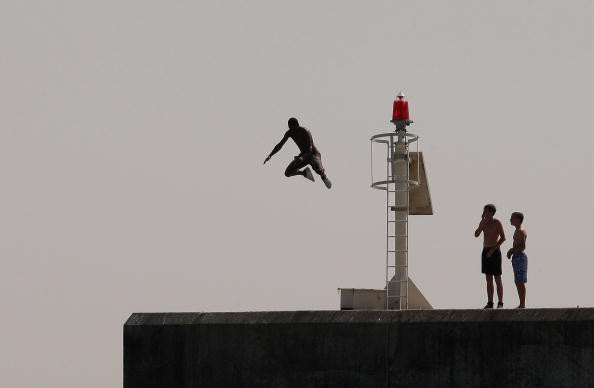Tombstoning warning issued to parents and teens after 20 deaths in 10 years
New warning over tombstoning comes as UK sees spike in water-related deaths.
Teenagers and young people have been warned of the dangers of tombstoning – jumping off high cliffs and objects into water – after it was revealed there have been 20 fatalities in the UK alone in the last 10 years (2005-2015).
There have also been a number of high-profile deaths around the UK coast over the summer (2016) some of which were a result of underestimating the dangers of jumping into cold water.
As well as hitting rocks and underwater obstacles, tombstoners can also be at risk of cold water shock – when the body is paralysed by sudden immersion in freezing water. Cameron Gosling, 14, died tombstoning in 2015 when he jumped into a river and never resurfaced. Cameron's mum Fiona said young people need to be aware of the dangers.
"Don't just jump in, if you're going to go in, start with your feet," Mrs Gosling told the Express. "Acclimatise your bodies, get them ready, because you just never know."
The Maritime and Coastguard Agency has launched a campaign aged at men between 18-29 making them aware of the dangers of tombstoning. Now the Local Government Association (LGA) wants the message to go out to younger people who might be tempted to have a go, either for a thrill or as a result of peer pressure.
"Tombstoning is extremely dangerous and grim statistics show that anyone doing it could kill themselves or end up with life-changing or serious injuries," says LGA's Simon Blackburn. "Jumping into water may appear enticing during warm weather, but you should never jump off any structure directly into the sea or a river as you can never be sure how deep the water is below.
"Shallow water, unseen objects under the water, hitting something on the way down or simply landing badly can lead to people being killed or paralysed. The message is clear – if you don't know that the depth of the water is safe or you cannot see what is below the surface, don't jump."

© Copyright IBTimes 2025. All rights reserved.






















